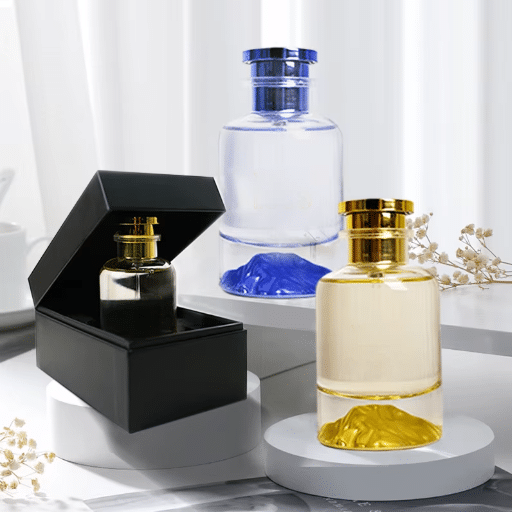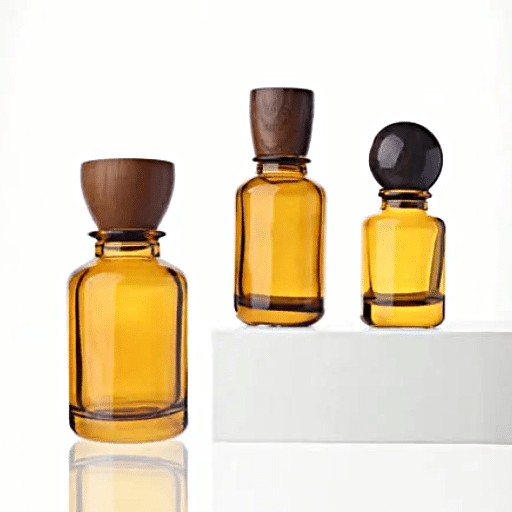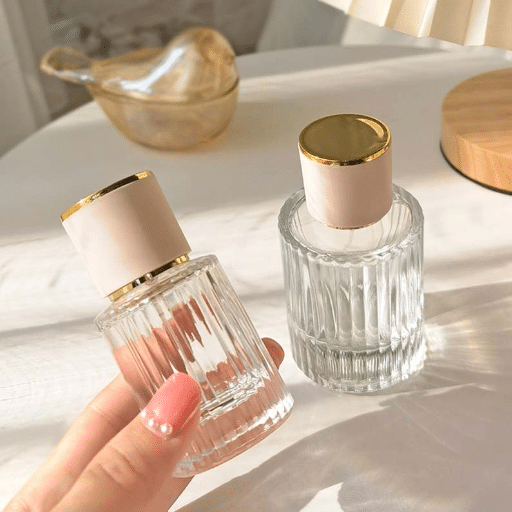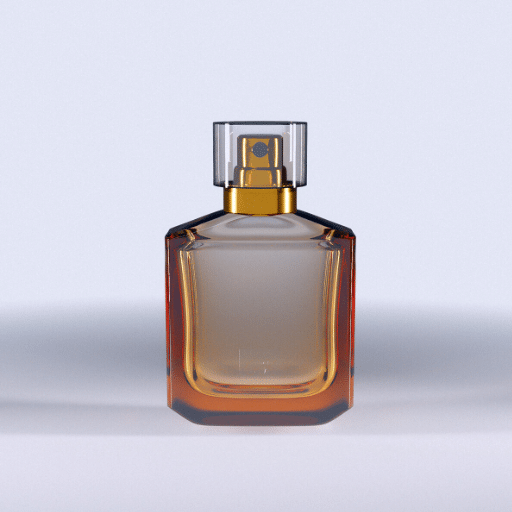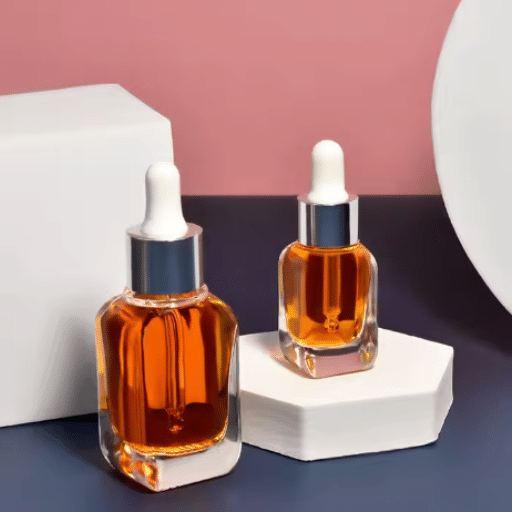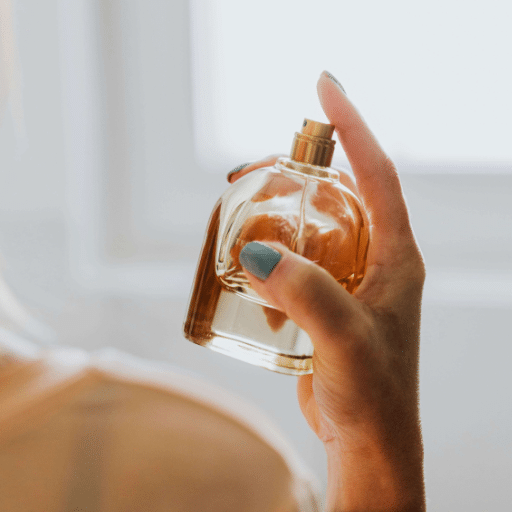Perfume-making is an exciting mixture of art and science that has found its grounds almost a thousand years ago and still enchants humanity with its promise of complexity and the glamour of the concept. Each bottle of perfume speaks of a different story, its narrative composed of the careful selection of raw materials and the crafting of complex techniques. But what is the art going on in the making of a fragrance? The perfume-making art, much of it derived from ancient practice, is still steeped in chemistry, history, and innovation: the extracting of essences from natural materials into carefully crafted scent profiles. Herein, the intricacies of perfume-making are methodically exhibited, laying bare the step-by-step unfolding of the transition from raw materials to the splash of luxury that is the finest scent. Whether you are a fragrance aficionado or merely curious about the scent that is dear to your heart, this guide distills the most fascinating steps of the creation of a masterpiece within a bottle.
History of Perfume
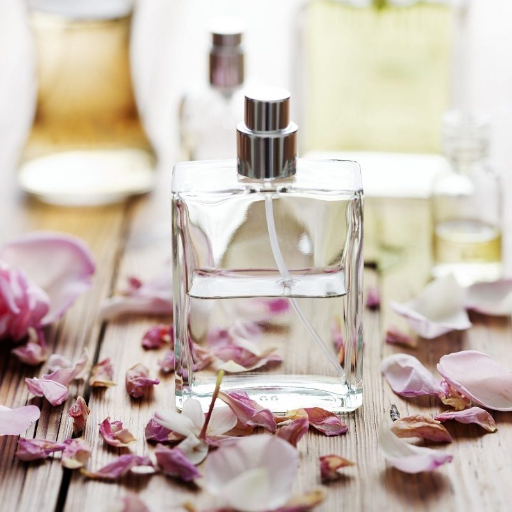
The history of perfume stems from ancient civilizations, where it was created for practical and ceremonial use. The earliest perfumes are said to have originated in Mesopotamia and Egypt around 3,000 BCE., where fragrant oils and balms were made from natural ingredients such as flowers, spices, and resins. These substances were often distributed in religious ceremonies to celebrate deities and the dead.
Roman and Greek epochs used perfumes as extravagances and personal care items, while trade routes passed on the exotic aromatics of myrrh and frankincense. During the Islamic Golden Age from the 8th to the 13th century, great advancements were made when scholars perfected the process of distillation to produce and obtain essential oils with greater efficiency.
During the Renaissance in Europe, perfume-making thrived, and France began to assert itself as the worldwide center of fine fragrances. But the actual birth of the perfume industry occurs in the late 19th century with the invention of synthetic compounds, enabling perfumers to develop more complex and longer-lasting aromas. These developments form the basis of influences in the making and progress in modern-day perfumery.
Origins of Perfume in Ancient Civilizations
Perfume began its journey through the annals of history within great ancient civilizations. Usage of perfumes probably commences from some 4,000 years before. The earliest mentions from Mesopotamia are the teachings of combining natural resins, flowers, and oils for their rituals and also personal purposes. Ancient Egypt held a paramount position: Conceptually, perfumes had their existence in religious rites, funerary functions, and everyday life-quality concocted from myrrh, frankincense, and lotus flowers. The Indus Valley civilization might have employed aromatic oils and incense as aids to spiritual healing and medicinal application. So, these primordial advancements set the stage for new applications in perfumery by other cultures.
Evolution of Fragrance Through the Centuries
The history of fragrances is closely linked to the history of trade, technology, and cultural interactions. During the Middle Ages, perfume production flourished in the Islamic world, where scholars improved upon distillation techniques to extract essential oils from flowers and plants. This knowledge was later introduced into the European countries via trade and conquests, affecting the earliest perfume-making industry in Europe.
The Renaissance heralded a big change, where arts and sciences once again flourished in Europe. Italy, especially Venice, came to be associated with the making of perfumes using exotic imported ingredients like ambergris and rose, paired with Italian know-how. By the 17th century, France had assumed the leadership of the perfume industry, with Grasse becoming a byword for the making of fine fragrances since the climate there was ideal for growing aromatic plants and flowers.
Given synthetic chemistry during the Industrial Revolution of the 19th century, the perfumery realm was totally reinvented, in that one class of companies allowed to create new scents beyond anything previously conceived. Key iconogenic gifts were the invention of aldehydes and the manufacture of the greatest Classic fragrance: Chanel No. 5. Currently, the fragrance industry is still evolving, applying biotechnological processes and sustainable craftsmanship for its innovate needs while fulfilling every consumer preference worldwide.
Modern Developments in the Perfume Industry
The industry thrives on biotechnology advancements, when natural and sustainable fragrance molecules can be created using fermentation processes. Apart from this, the other important area is about eco-friendly practices-involving the use of biodegradable raw materials and sustainably sourced ingredients. Moreover, digital technology has changed the industry, with AI and machine learning being used in fragrance formulation and for personalized consumer experiences. The innovations symbolize the transition to eco-consciousness and customization while retaining artistic craftsmanship in the industry.
Raw Materials Sourcing
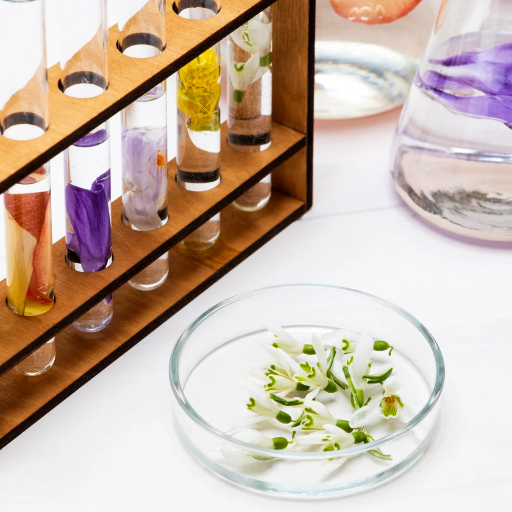
Raw materials sourcing in the fragrance industry is a delicate and multifaceted procedure, requiring considerations of sustainability, quality, and scalability. A wide range of raw materials, including essential oils, absolutes, and synthetic chemicals, is sourced from various regions of the world to yield the best aromatic expression. Other sustainable sourcing practices today involve environmentally and socially conscious dealings with local producers to minimize environmental degradation and enable fair trade opportunities for them. Traceability and certification schemes also operate to assure products’ conformity with safety regulations complying with IFRA standards and preserve the integrity of the products. Overseen in harmony with a spectrum of additional practices are the resurrection of alternatives for some natural resources, limiting exploitation on scarce raw material, and supporting ecological measures.
Flowers: The Heart of Many Fragrances
Flowers stand as an indispensable factor in the creation of numerous fragrances presenting the entire gamut of aromatic profiles from essential oils and extracts. I would say their effect is both sensuous and symbolic, with the likes of jasmine, rose, and lavender being iconic cornerstones of perfumery. These bewitching aromas are obtained through such methods as steam distillation or solvent extraction, working hard to ensure that the natural complexity of the scent is preserved. The recycling emphasis also puts in place the appropriate source of the flowers, making sure that the environment and ethical considerations have been accounted for all through the making of these truly exquisite scents.
Herbs and Spices: Adding Complexity to Scents
Herbs and spices form the essence for making a fragrance more complex with certain unique indepth and lively qualities in perfume composition. Aromatic herbs such as basil, thyme, and sage can impart fresh, earthy, or somewhat resinous profiles upon a fragrance, while spices such as cinnamon, clove, and cardamom often offer warm, exotic, and somewhat flamboyant undertones. These ingredients are usually processed either by steam distillation, cold pressing, or CO2 extraction in order to maximize retention of their strong aroma.
Deepening a fragrance’s scent with herbs and spices is just one way this combination creates interesting olfactory appearances. Herbs and spices also improve the track longevity of the aroma. The blending of these ingredients leads to complete, layered perfumes that present individuals with distinctive olfactory impressions. Ethical sourcing and cultivation are paramount considerations concerning the principal ingredients to ensure that their production meets all environmental and social standards. Due to their versatility and extensive aromatic spectrum, herbs and spices continue to boost the fine art of perfumery.
Natural vs. Synthetic Ingredients
Natural ingredients are plant-based, animal-derived, or mineral-origin materials, while synthetic ingredients are lab-engineered compounds designed to replicate or enhance natural properties.
|
Parameter |
Natural |
Synthetic |
|---|---|---|
|
Origin |
Plant/Animal |
Laboratory |
|
Consistency |
Variable |
Uniform |
|
Cost |
High |
Lower |
|
Availability |
Limited |
Abundant |
|
Sustainability |
Dependent |
Variable |
|
Purity |
Complex |
High |
|
Allergen Risk |
Higher |
Lower |
|
Shelf Life |
Shorter |
Longer |
Extraction Methods
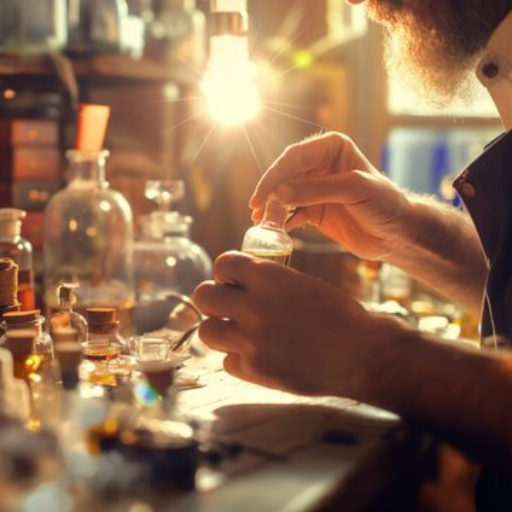
Extraction methods differ according to the natural or synthetic nature of the material desired. Commonly, extraction methods for natural substances are cold pressing, distillation, solvent extraction, or enzymatic processes, aiming to isolate the desired compound from raw materials such as plants or minerals. Care has to be taken with such methods to avoid compromising the qualities of the natural compounds and to ensure reasonable yields and purity levels. Synthetic materials, by contrast, are usually produced through controlled chemical synthetic routes in laboratories, applying conditions that assure uniformity and high purity and maximize scalability. The selection of the method is based on application, efficiency, and resource availability.
Steam Distillation: The Most Common Technique
The most common distillation method used in extracting essential oils and other volatile constituents from natural plant materials is steam distillation. This technique applies steam to the plant material, causing the volatile ingredients to vaporize. The vapor is then condensed back to liquid form, where the essential oil separates from the water because of the difference in their respective densities. This distillation form is advantageous for extracting compounds that cannot withstand heat without causing their degradation of chemical structure, hence producing compounds of high-quality yields. Steam distillation is known for fast extraction, ease of scaling up, and retaining buildup of aromatic substances in the extracted material.
Solvent Extraction: Capturing Delicate Aromas
Solvent extraction is a sophisticated operation for isolating delicate aromatic compounds that may be too fragile for steam distillation. Organic solvents like C_2H_5OH, hexane, or petroleum ether are used to dissolve the volatile compounds from the raw material under extraction. After the compounds have been extracted, the solvent is removed, usually by evaporation, to yield a concentrated product, often called a concrete or resin. This material may then be further purified-washed with alcohol-to produce… an absolute… the most concentrated and purified form of an essence.
The method is employed for flowers and other botanicals that have very limited amounts of essential oils, permitting the capture of extremely aromatic yet chemically sensitive compounds. One drawback with the method is that traces of solvent may end up in the final product-this must be considered in natural perfumery or in therapeutic use. In spite of this, solvent extraction has remained a method of choice to produce highest-grade aromas as it ensures retention of complicated fragrance profiles that could otherwise be destroyed in heat-based extraction methods.
Cold Pressing: Essential for Citrus Oils
A purely mechanical method of extraction uniquely suited for the production of citrus oils is cold pressing. This process presses the rind of the citrus fruit at low temperatures, ensuring that the essential oils are collected without subjecting them to heat or using solvents. Exclusively employing mechanical force in the cold-pressing process is best for applications requiring unaltered, top-quality citrus essences, as it rear-protects the chemical integrity and aroma of the oils in nature. This allows another advantage of being free from any potential chemical contamination-all of which are important considerations in food, cosmetic, and aromatherapy industries. Nonetheless, since it is fundamentally dependent on the physical state of the fruit peels, which depends on freshness and handling of raw materials, such factors dictate yield and quality.
Blending and Formulation
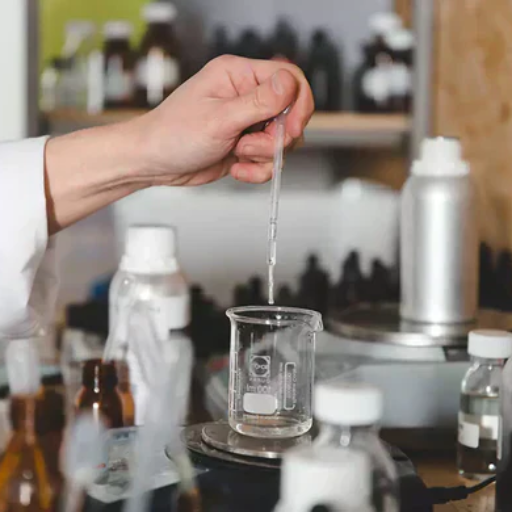
Blending and formulating account for all the features needed in the ratio, consistency, or any functionality of the final product. The process encompasses the mixing of very different citrus essences in order to achieve a particular aroma or flavor characteristic. Important factors to consider during blending include the chemical composition of the oils, compatibility among components, and their stability while in storage. Proper formulation further considers the application, whether for the food industry, some cosmetic formulation, or perhaps of therapeutic interest. These factors together manage to provide the required product performance and safety.
The Art of Combining Scents
In combining scents, it must be understood well how chemical properties, compatibilities, and usages come into play. They primarily need to find an accord between top, middle, and base notes, which are key constituents that play a role in the development phase of an olfactory experience and in its impregnation with balance. The top notes lie on the lighter side and evaporate within the blink of an eye, hence creating that first impression; the middle note carries the heart of the scent, while the base note lends strength and life to it.
Another concern that should surface in scent-blending is the concentration of a component. Overly concentrated substances will carry an aroma that tastes too much in aroma and yet conflict in scent with those other ingredients or categories inscribed in the formulation. Using categories such as floral, woody, citrus, and spicy, perfumers and formulators put complementary structures that will provide olfactory balance. Analytical services such as gas chromatography-mass spectrometry (GC-MS) will come in handy in discovering the molecular composition, which in turn can help to check compatibleities and stability.
In such applications, one should consider adherence to regulatory conditions, especially when creating products aspirated for dermal application or for consumption. Then things get into testing for stability over time and under different storage conditions to eventually conform to quality standards. Putting together both the scientific and the artistic approaches will give birth to tall, complex, beautiful, and functional scent profiles.
Creating Balanced and Harmonious Fragrances
The creation of a balanced and harmonious fragrance involves matrixing the top notes, the heart or middle notes, and the base notes to form the best possible scent profile. Being the most volatile, top notes lay down the first impression of the fragrance-a light first impression bearing in themselves typically of citrusy or herbal tones. Middle notes, or the “heart”, appear as the top notes fade away and embody the floral or spicy traits that characterize the scent itself. Base notes being the most lasting and provide depth and longevity with rich and warm ingredients of sandalwood or vanilla.
To keep a fragrance in balance, correct proportionality among notes needs to be maintained. Oftentimes, this demands constant refinement and exhaustive testing. Olfactory blending techniques, ingredient quality, and the preferences of the targeted population invoke increasing attention, guaranteeing that the fragrance really resonates with its audience. Uniting, this creative endeavour and scientific execution allows for a fruitful olfactory partnership.
Describing a Perfume: Notes and Composition
Perfume composition is structured using notes that are usually divided into top, middle (or heart), and base notes. Top notes provide that first impression of a fragrance; they tend to be light and volatile in nature-citrus or herbal extracts. Middle notes come in as the top notes start to fade, forming the very identity of the scent with floral, spice, or fruity elements. Base notes act as the grounding force, lending in some depth and longevity with often of the heavier kind-musk, amber, wood. The balance and ratio of the individual notes in the perfume is very much carefully blended to create a very fluid and lasting olfactory experience, designed according to the market it is about to reach and individual tastes.
Aging Process of Fragrance
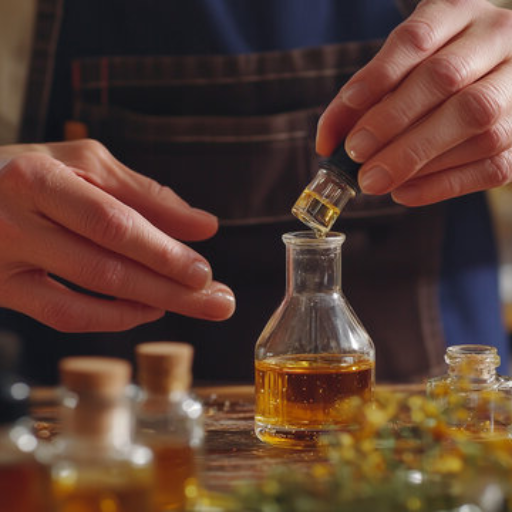
Fragrance aging, also known as maceration, is a stage in perfume manufacturing where the blend of essential oils, alcohol, and water is allowed to mature. During this period, the ingredients interact at a molecular level, harmonizing toward the increase in complexity, stability, and longevity of the scent. Aging takes several weeks to months generally, depending on the formulation, and it helps in the final olfactory profile. Temperature, storage conditions, and time all play a role, ensuring the scent is well balanced before bottling.
How Aging Affects Scent Development
The processes of aging greatly distinguish the profile developed by any particular scent. The volatile compounds in the formulation undergo slow chemical changes during aging, such as oxidation and esterification, which add complexity to the fragrance and deepen its character. Alcohol functions as a solvent, which allows aromatic molecules to intermingle and ensures proper emulsification.
Stability being a characteristic of temperature is a key factor for cool temperatures to maintain that consistency and to ensure it does not deteriorate according to notes deemed to be sensitive. Softer top notes dominate with age while harsher ones degenerate, allowing the enhancement of heart and base notes to be well perceived. This enhancement represents a more pleasing and well-nuanced olfactory experience. Properly aged scents stabilize and have improved projection and longevity, allowing the fragrance to meet its target olfactory effect right at the moment of application.
The Role of Time in Perfume Maturation
Establishing aside, perfume maturation is a delicate phase where chemical interactions between fragrance ingredients occur, stabilizing the composition over time. This interlude allows for the harmonious interaction of the different elements, leading to more enhanced balance and greater depth in the perfume. Time aids in the gradual evaporation of some coarse molecules, thus polishing the fragrance to a silky finish. Proper aging serves to align the opening, heart, and base notes for a coherent olfactory journey and maximum performance when worn.
Quality Control and Final Adjustments
Quality control in fragrance production involves meticulously testing the product to ensure consistency, safety, and adherence to design specifications. I focus on extensive evaluations, including stability tests, scent profile comparisons, and ingredient analysis. Any deviations from the intended formula are identified and corrected during this stage. Final adjustments are made to optimize the performance of the fragrance, refining aspects such as longevity, projection, and overall harmony across top, heart, and base notes. This comprehensive process guarantees a finished product that aligns with both regulatory standards and customer expectations.
Reference Sources
-
How Perfume Is Made – A Master Perfumers’ Industry Guide – This guide explains the six methods of oil extraction and the overall process of perfume creation.
-
How Is Perfume Made? Perfume Manufacturing Guide – A detailed guide covering ingredient collection, oil extraction, blending, aging, and quality control.
-
The Art and Science of Fragrance: How Perfumes Are Made – This article explores the blend of art and science in creating captivating fragrances.
-
Fragrance Creation: Art & Science in Signature Scents – A detailed look at how science and art come together to craft unique and memorable scents.
Frequently Asked Questions (FAQs)
Q:How is perfume prepared from natural ingredients?
A:Perfume preparation is a meticulous process that often involves natural ingredients such as essential oils, aromatic plant materials, and aroma compounds. The extraction procedures, such as steam distillation or solvent extraction, extract the fragrant oils from flowers, fruits, and spices. These natural odors are then combined to form a harmonious fragrance that enchants the senses.
Q:What is the process of manufacturing perfumes?
A:Perfume manufacturing generally starts from the making of raw-quality materials. When the ingredients have been brought in, extraction is carried out so that fragrance oils can be obtained. Depending on the perfume oil concentration required, the perfumer then mixes those fragrance oils in a given ratio to derive a specific scent profile. At last, it is dissolved in a solvent, normally ethyl alcohol, and the mixture is allowed to mature for some time, which ensures that the complete development of fragrance character is realized, and is after that bottled.
Q:What are the ingredients used in the perfume manufacturing process?
A:Ingredients in the perfume manufacturing process are often categorized into natural and synthetic. Natural ingredients include essential oils derived from flowers, herbs, and spices, whereas synthetic ingredients are manufactured in Oc to simulate certain scents. They then join together to give the fragrance complex enough to define any perfume.
Q:How does the process of creation of perfume work?
A:The creation of perfume commences with several stages from selecting base notes, middle notes, and top notes, and an experienced perfumer formulates a law of these elements to give a scent experience that is enjoyable. Following this, the fragrance is put to the test and is tweaked in such a way that it fits the desired profile.
Q:What is the history of perfume and reflected upon in the process of its making?
A:The history of perfume goes back to thousands of years ago when ancient civilization used natural scents in their religion and for personal adornment. With the passage of time, the art of perfume manufacturing shed its ancient aspect and has newer ways of extraction and use of ingredients which is the very basis of today’s perfume industry. From this mentioned evolvement came first classic fragrances and synthetic perfumes.
Q:What does the perfume industry’s future look like?
A:With increasing emphasis on sustainability and natural ingredients, the future looks bright for the perfume industry. A consumer nowadays hopes for an eco-friendly perfume that carries with it a reputation for being responsible in terms of its materials. Furthermore, technology development may grant new means of extraction and formulation of fragrances for each individual.
Q:What are the varieties of scents used in perfumes?
A:Perfumes apply scents of all sorts belonging to different families such as floral, oriental, woody, and fresh. Each category differs depending on the mixture of natural and synthetic ingredients in the composition. For instance, musk from male deer and ambergris from the sperm whale are celebrated for their unique scents and are often used to increase the longevity of a perfume.
Q:What role does a fragrance company play in constructing a perfume?
A:A fragrance company plays a vital role in reaching the end of the manufacturing of perfumes by sourcing the raw materials, formulating the product in an innovative way, and marketing the end product. They work with the perfumers in providing a scent that the consumers can associate with and make sure that what is within the consciousness of today’s population is indeed what is being produced with from fragrance.
Q:How are unique fragrances produced?
A:Perfume makers produce unique fragrances by blending and balancing quantities of various fragrance oils, essential oils, and aromatic compounds. Often times, nature, culture, and one’s own experiences ooze inspiration into aromachologists as they create the distinctive perfume that can compete in the market.

